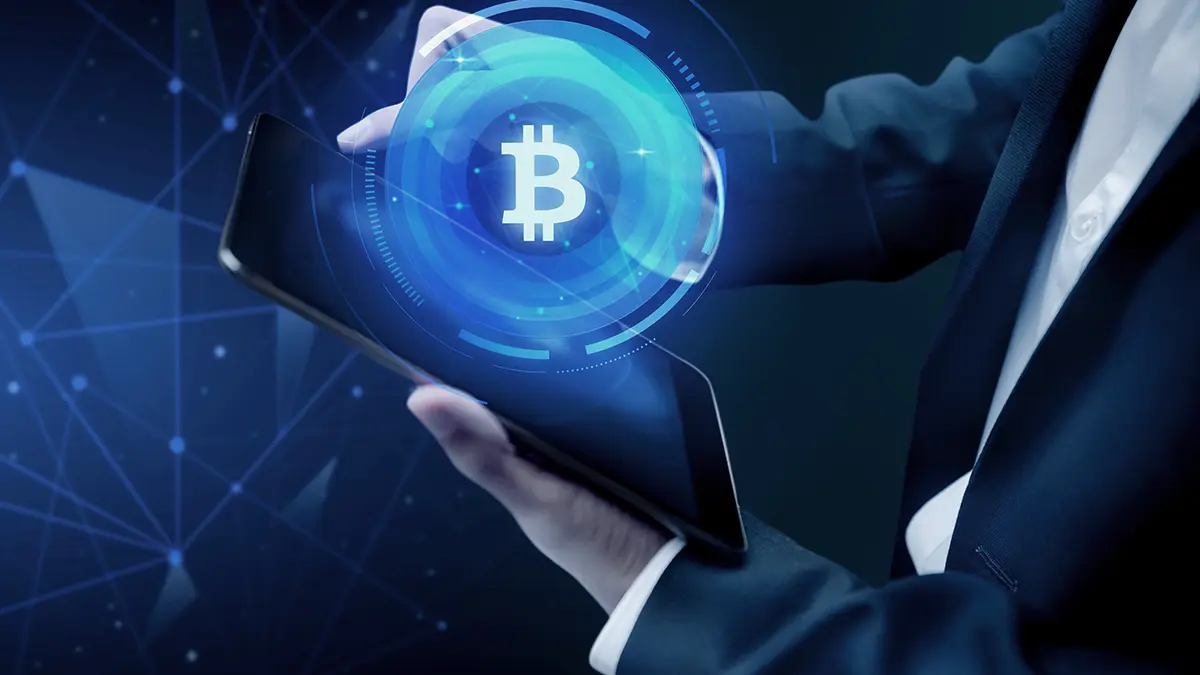Table of Contents
Are you ready to dive into the world of cryptocurrencies but unsure where to start? Wondering which digital currencies are the best investment for beginners? Look no further! In this comprehensive guide, we’ll explore the top 8 cryptocurrencies for new investors, providing you with all the information you need to make informed decisions and navigate the exciting world of digital assets.
Introduction
Cryptocurrencies have taken the financial world by storm, offering unique investment opportunities that are accessible to everyone. With thousands of cryptocurrencies on the market, it can be overwhelming for new investors to know where to start. This article aims to simplify your journey by highlighting the top 8 cryptocurrencies that are ideal for beginners. We’ll delve into their key features, potential for growth, and why they stand out in the crowded crypto space.
1. Bitcoin (BTC)
What is Bitcoin?
Bitcoin is the first and most well-known cryptocurrency, created in 2009 by an anonymous entity known as Satoshi Nakamoto. It operates on a decentralized peer-to-peer network, allowing users to send and receive payments without the need for a central authority.
Why Invest in Bitcoin?
- Proven Track Record: Bitcoin has been around for over a decade and has consistently shown its potential for growth.
- Market Leader: As the most widely recognized cryptocurrency, Bitcoin enjoys significant market dominance and liquidity.
- Institutional Adoption: Increasing interest from institutional investors adds credibility and stability to Bitcoin.
Key Features
| Feature | Details |
|---|---|
| Market Cap | $1 Trillion+ |
| Supply Limit | 21 Million BTC |
| Consensus Mechanism | Proof of Work |
| Use Cases | Store of Value, Medium of Exchange |
FAQs
Q: Is Bitcoin a safe investment for beginners? A: While all investments carry risks, Bitcoin’s established presence and market acceptance make it a relatively safer option for new investors.
Q: How can I buy Bitcoin? A: Bitcoin can be purchased on major cryptocurrency exchanges like Coinbase, Binance, and Kraken.
2. Ethereum (ETH)
What is Ethereum?
Ethereum, created by Vitalik Buterin in 2015, is a decentralized platform that enables developers to build and deploy smart contracts and decentralized applications (DApps).
Why Invest in Ethereum?
- Smart Contracts: Ethereum’s ability to execute smart contracts makes it a versatile platform with numerous applications.
- Growing Ecosystem: A large number of projects and tokens are built on the Ethereum network, driving its utility and value.
- Upcoming Upgrades: Ethereum 2.0 promises to improve scalability and security, enhancing its long-term potential.
Key Features
| Feature | Details |
|---|---|
| Market Cap | $500 Billion+ |
| Supply Limit | None (with deflationary mechanisms) |
| Consensus Mechanism | Proof of Stake (Ethereum 2.0) |
| Use Cases | Smart Contracts, DApps, DeFi |
FAQs
Q: What is the difference between Ethereum and Bitcoin? A: Bitcoin is primarily a digital currency, while Ethereum offers a platform for building decentralized applications and executing smart contracts.
Q: What are smart contracts? A: Smart contracts are self-executing contracts with the terms directly written into code, automatically enforcing and executing the terms when conditions are met.
3. Binance Coin (BNB)
What is Binance Coin?
Binance Coin is the native cryptocurrency of the Binance exchange, one of the largest and most popular cryptocurrency exchanges globally. BNB is used to pay for transaction fees on the Binance platform and participate in various Binance ecosystem activities.
Why Invest in Binance Coin?
- Exchange Utility: BNB offers significant utility within the Binance ecosystem, providing discounts on trading fees and access to token sales.
- Burn Mechanism: Binance regularly burns BNB tokens, reducing the supply and potentially increasing the value over time.
- Expanding Use Cases: BNB’s use extends beyond the Binance exchange, including payment for goods and services and participation in decentralized finance (DeFi) projects.
Key Features
| Feature | Details |
|---|---|
| Market Cap | $100 Billion+ |
| Supply Limit | 200 Million BNB |
| Consensus Mechanism | Tendermint Byzantine-Fault-Tolerant (BFT) |
| Use Cases | Transaction Fees, Token Sales, DeFi |
FAQs
Q: How does Binance Coin benefit users on the Binance exchange? A: Binance Coin provides users with a discount on trading fees and access to exclusive token sales and events on the Binance platform.
Q: Can Binance Coin be used outside of the Binance exchange? A: Yes, BNB is accepted by various merchants and can be used in a range of decentralized applications and services.
4. Cardano (ADA)
What is Cardano?
Cardano is a third-generation blockchain platform developed by Input Output Hong Kong (IOHK) and founded by Charles Hoskinson, a co-founder of Ethereum. Cardano aims to provide a secure and scalable platform for the development of decentralized applications and smart contracts.
Why Invest in Cardano?
- Scientific Approach: Cardano’s development is driven by a research-based approach, ensuring high security and scalability.
- Sustainability: The Ouroboros consensus mechanism is designed to be energy-efficient and sustainable.
- Active Development: Ongoing upgrades and developments, such as the Alonzo hard fork, enhance Cardano’s capabilities and potential.
Key Features
| Feature | Details |
|---|---|
| Market Cap | $50 Billion+ |
| Supply Limit | 45 Billion ADA |
| Consensus Mechanism | Ouroboros Proof of Stake |
| Use Cases | Smart Contracts, DApps, Identity Management |
FAQs
Q: What sets Cardano apart from other blockchain platforms? A: Cardano’s unique research-driven development, energy-efficient consensus mechanism, and focus on scalability and security differentiate it from other platforms.
Q: What is the Alonzo hard fork? A: The Alonzo hard fork introduced smart contract functionality to the Cardano blockchain, enabling the development of decentralized applications.
5. Solana (SOL)
What is Solana?
Solana is a high-performance blockchain platform designed for scalability and speed. It was developed by Anatoly Yakovenko and launched in 2020, offering a fast and secure platform for decentralized applications and crypto-currencies.
Why Invest in Solana?
- High Throughput: Solana can process thousands of transactions per second, making it one of the fastest blockchains available.
- Low Fees: The platform offers low transaction fees, making it cost-effective for users and developers.
- Growing Ecosystem: Solana’s ecosystem is rapidly expanding, with numerous projects and partnerships enhancing its value and utility.
Key Features
| Feature | Details |
|---|---|
| Market Cap | $40 Billion+ |
| Supply Limit | None |
| Consensus Mechanism | Proof of History (PoH) combined with Proof of Stake (PoS) |
| Use Cases | DApps, DeFi, NFTs |
FAQs
Q: How does Solana achieve high transaction speeds? A: Solana uses a unique Proof of History (PoH) consensus mechanism that timestamps transactions, allowing for parallel processing and high throughput.
Q: What are the primary use cases for Solana? A: Solana is used for decentralized applications, decentralized finance (DeFi) platforms, and non-fungible tokens (NFTs).
6. Polkadot (DOT)
What is Polkadot?
Polkadot is a multi-chain blockchain platform that enables different blockchains to interoperate and share information securely. It was created by Dr. Gavin Wood, another co-founder of Ethereum, and aims to create a decentralized web.
Why Invest in Polkadot?
- Interoperability: Polkadot allows different blockchains to communicate and share information, fostering a connected ecosystem.
- Scalability: The platform can handle multiple parallel blockchains (parachains), improving scalability and efficiency.
- Governance: Polkadot features a sophisticated governance system, enabling stakeholders to influence the platform’s future development.
Key Features
| Feature | Details |
|---|---|
| Market Cap | $30 Billion+ |
| Supply Limit | None |
| Consensus Mechanism | Nominated Proof of Stake (NPoS) |
| Use Cases | Interoperability, DApps, DeFi |
FAQs
Q: What is a parachain in Polkadot? A: A parachain is an individual blockchain that runs parallel to the main Polkadot chain, enabling interoperability and scalability.
Q: How does Polkadot’s governance system work? A: Polkadot’s governance system allows DOT token holders to propose and vote on changes to the protocol, ensuring decentralized decision-making.
7. Chainlink (LINK)
What is Chainlink?
Chainlink is a decentralized oracle network that connects smart contracts with real-world data. It enables smart contracts to interact with external data sources, APIs, and traditional banking systems securely.
Why Invest in Chainlink?
- Critical Infrastructure: Chainlink provides essential services for smart contracts, enhancing their functionality and real-world application.
- Partnerships: Chainlink has numerous partnerships with major companies and blockchain projects, expanding its use cases and adoption.
- Security: The decentralized oracle network ensures secure and reliable data feeds for smart contracts.
Key Features
| Feature | Details |
|---|---|
| Market Cap | $20 Billion+ |
| Supply Limit | 1 Billion LINK |
| Consensus Mechanism | Oracle Reputation System |
| Use Cases | Oracles, Smart Contracts, Data Feeds |
FAQs
Q: What is an oracle in blockchain technology? A: An oracle is a service that provides external data to smart contracts, enabling them to execute based on real-world information.
Q: How does Chainlink ensure the security of its data feeds? A: Chainlink uses a decentralized network of oracles and a reputation system to ensure the accuracy and reliability of data feeds.
8. Litecoin (LTC)
What is Litecoin?
Litecoin is a peer-to-peer cryptocurrency created by Charlie Lee in 2011. It was designed to provide fast, secure, and low-cost payments by leveraging the properties of blockchain technology.
Why Invest in Litecoin?
- Established History: As one of the earliest cryptocurrencies, Litecoin has a proven track record and a strong community.
- Faster Transactions: Litecoin offers faster transaction confirmation times compared to Bitcoin, making it more suitable for everyday transactions.
- Lower Fees: The transaction fees on the Litecoin network are generally lower than those on the Bitcoin network.
Key Features
| Feature | Details |
|---|---|
| Market Cap | $10 Billion+ |
| Supply Limit | 84 Million LTC |
| Consensus Mechanism | Proof of Work |
| Use Cases | Peer-to-Peer Payments, Digital Cash |
FAQs
Q: How is Litecoin different from Bitcoin? A: Litecoin offers faster transaction times and lower fees compared to Bitcoin, making it more suitable for everyday transactions.
Q: Where can I buy Litecoin? A: Litecoin can be purchased on major cryptocurrency exchanges such as Coinbase, Binance, and Kraken.
Conclusion
Investing in cryptocurrencies can be a rewarding endeavor, especially when you choose the right assets. The eight cryptocurrencies highlighted in this article—Bitcoin, Ethereum, Binance Coin, Cardano, Solana, Polkadot, Chainlink, and Litecoin—offer unique features and potential for growth, making them ideal choices for new investors. By understanding their key characteristics and use cases, you can make informed decisions and confidently enter the world of cryptocurrency investment.
Remember, while cryptocurrencies present exciting opportunities, it’s essential to conduct thorough research and consider your risk tolerance before investing. Happy investing.



